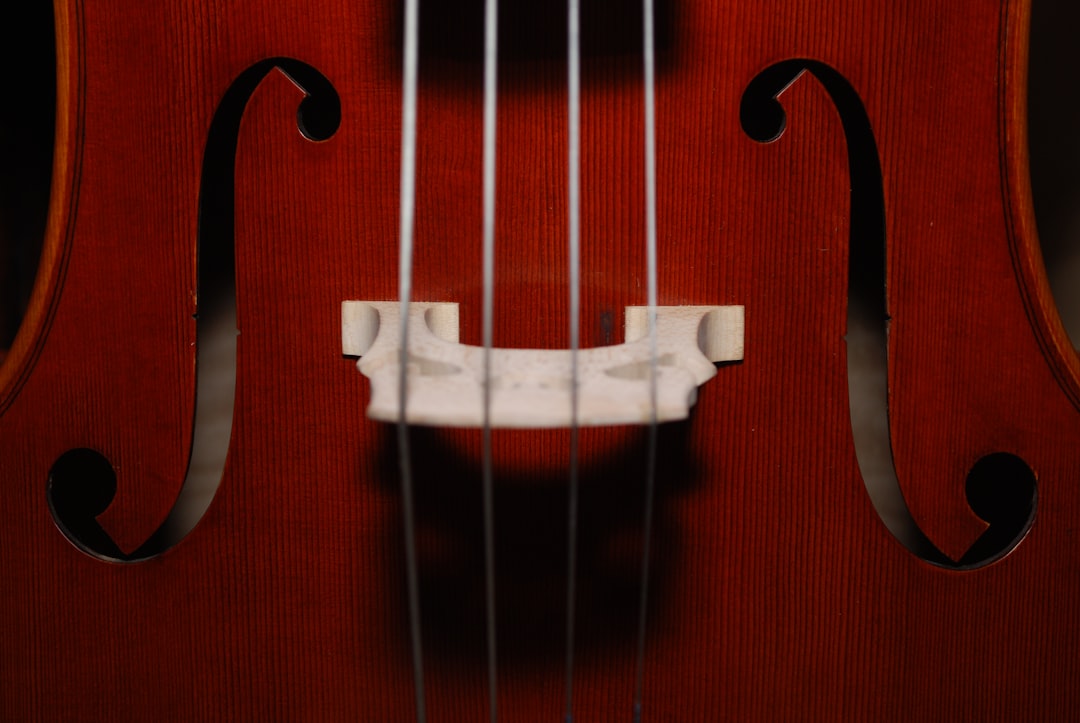The detached fine tuner is an essential component in the world of string instruments, particularly for violins, violas, and cellos. This small device allows musicians to make precise adjustments to the pitch of their strings, ensuring that their instrument remains in tune throughout a performance or practice session. Unlike the traditional pegs located at the scroll of the instrument, which are used for broader tuning adjustments, the fine tuner provides a more refined method for achieving the exact pitch desired.
This is especially important for string players who require a high level of accuracy in their tuning, as even slight deviations can significantly affect the overall sound. Understanding how the detached fine tuner operates is crucial for any string player. Typically, these tuners are attached to the tailpiece of the instrument and are designed to be easily accessible.
They work by adjusting the length of the string, which in turn alters its pitch. The mechanism is simple yet effective; turning the tuner clockwise tightens the string, raising its pitch, while turning it counterclockwise loosens the string, lowering its pitch. This straightforward functionality allows musicians to make quick adjustments during rehearsals or performances without needing to reach for the pegs, making it an invaluable tool for maintaining optimal tuning.
Key Takeaways
- Understanding the Detached Fine Tuner:
- The detached fine tuner is a small screw used to adjust the tension of individual strings on a stringed instrument.
- Proper Technique for Adjusting the Fine Tuner:
- Use small, gradual adjustments when turning the fine tuner to avoid sudden changes in pitch.
- Maintaining the Correct Tension:
- Regularly check the tension of each string to ensure they are in tune and not too loose or too tight.
- Avoiding Over-tightening the Fine Tuner:
- Be cautious not to over-tighten the fine tuner, as this can cause damage to the string or the instrument.
- Troubleshooting Common Issues with the Detached Fine Tuner:
- If the fine tuner becomes difficult to turn or is not functioning properly, it may need to be cleaned or lubricated.
- Using Fine Tuners for Different String Types:
- Different types of strings may require different adjustments on the fine tuner to achieve the correct tension and pitch.
- Tips for Keeping the Fine Tuner in Good Condition:
- Keep the fine tuner clean and free of debris, and store the instrument in a safe place to prevent damage to the fine tuner.
- Incorporating Fine Tuner Adjustments into Your Practice Routine:
- Make fine tuner adjustments a regular part of your practice routine to ensure your instrument stays in tune and performs at its best.
Proper Technique for Adjusting the Fine Tuner
Making Incremental Adjustments
It is advisable to make small, incremental changes rather than large turns, as this allows for greater control over the pitch. Overzealous adjustments can lead to unintended consequences, such as strings snapping or becoming overly tight.
Proper Hand Positioning
Ideally, one hand should stabilize the instrument while the other operates the tuner. This not only provides better control but also helps prevent any unnecessary movement that could affect tuning accuracy.
Refining Technique through Practice
With practice, players can refine their technique and become adept at using the fine tuner effectively. Developing a keen ear for pitch will aid musicians in making more informed adjustments, and they will be able to achieve the best results from their fine tuner.
Maintaining the Correct Tension

Maintaining the correct tension on strings is crucial for both sound quality and playability. The detached fine tuner plays a significant role in this process, as it allows musicians to make precise adjustments that can help maintain optimal tension levels. When strings are too loose, they may produce a dull sound and lack resonance; conversely, strings that are too tight can lead to a harsh tone and may even risk breaking under excessive pressure.
Therefore, understanding how to use the fine tuner to achieve and maintain proper tension is essential for any string player. To ensure that tension remains consistent, musicians should regularly check their tuning before and during practice sessions or performances. Environmental factors such as temperature and humidity can affect string tension, causing them to go out of tune more quickly than usual.
By using the fine tuner to make necessary adjustments, players can keep their strings at an ideal tension level. Additionally, it is important to remember that different strings have varying tension requirements; thus, players should familiarize themselves with their specific instrument and string type to achieve optimal results.
Avoiding Over-tightening the Fine Tuner
| Technique | Benefits | Considerations |
|---|---|---|
| Use a tuner with a built-in torque limiter | Prevents over-tightening | May be more expensive |
| Use a torque wrench | Precise control over tightening | Requires additional tool |
| Follow manufacturer’s recommended torque specifications | Ensures proper tension | May require special tools |
One of the most common pitfalls when using a detached fine tuner is over-tightening. This occurs when a musician turns the tuner too far in one direction, resulting in excessive tension on the string. Over-tightening can lead to several issues, including a compromised sound quality and an increased risk of string breakage.
It is essential for players to be aware of this potential problem and take steps to avoid it during their tuning process. To prevent over-tightening, musicians should always approach fine tuning with caution. A good rule of thumb is to make adjustments in small increments and listen carefully to the resulting pitch changes.
If a player notices that a string is becoming increasingly difficult to turn or feels unusually tight, it may be an indication that they have gone too far with their adjustments. In such cases, it is advisable to back off slightly and reassess the tuning before making further changes. By exercising patience and attentiveness during this process, musicians can avoid the pitfalls associated with over-tightening and maintain their instrument’s integrity.
Troubleshooting Common Issues with the Detached Fine Tuner
Despite its simplicity, using a detached fine tuner can sometimes lead to common issues that may frustrate musicians. One frequent problem is that a string may not hold its tuning after being adjusted with the fine tuner. This can occur for various reasons, including improper installation of the string or wear and tear on the tuner itself.
If a player finds that their strings frequently slip out of tune despite regular adjustments, it may be worth examining both the strings and the fine tuner for any signs of damage or malfunction. Another issue that musicians may encounter is difficulty in turning the fine tuner itself. If a tuner feels stuck or resistant when attempting to make adjustments, it could indicate that debris or corrosion has built up within its mechanism.
In such cases, cleaning the tuner gently with a soft cloth or using a small amount of lubricant may help restore its functionality. If problems persist despite these efforts, it may be necessary to consult a professional luthier who can assess and repair any underlying issues with the fine tuner or other components of the instrument.
Using Fine Tuners for Different String Types

Synthetic Strings: Consistency and Reliability
Musicians using synthetic strings often find that they can rely on their fine tuners more consistently without experiencing significant pitch fluctuations.
Gut Strings: Rich Tonal Qualities and Sensitivity
On the other hand, gut strings are known for their rich tonal qualities but can be more temperamental when it comes to maintaining pitch stability. When using fine tuners with gut strings, players should consider how each type responds to tension changes. For example, gut strings may require more delicate adjustments due to their sensitivity to tension variations.
Achieving Optimal Results
Musicians should take care not to over-tighten these strings when using their fine tuners, as doing so can lead to unwanted tonal changes or even breakage. By understanding how different string types interact with their fine tuners, players can tailor their approach to achieve optimal results.
Tips for Keeping the Fine Tuner in Good Condition
Maintaining a detached fine tuner in good condition is essential for ensuring its longevity and effectiveness. Regular cleaning is one of the most straightforward yet impactful ways to care for this component. Dust and grime can accumulate over time, potentially hindering its performance.
Musicians should make it a habit to wipe down their fine tuners after each practice session or performance with a soft cloth to remove any debris that may have settled on them. In addition to regular cleaning, players should also periodically inspect their fine tuners for signs of wear or damage. This includes checking for any rust or corrosion that may have developed over time.
If any issues are detected, addressing them promptly can prevent further deterioration and ensure that the fine tuner continues to function optimally. Furthermore, musicians should consider storing their instruments in appropriate conditions—avoiding extreme temperatures and humidity levels—to protect not only their fine tuners but also their entire instrument.
Incorporating Fine Tuner Adjustments into Your Practice Routine
Incorporating fine tuner adjustments into a practice routine can significantly enhance a musician’s overall performance and tuning skills. Regularly checking and adjusting tuning during practice sessions helps develop an ear for pitch and fosters greater familiarity with how different adjustments affect sound quality. Players should make it a point to include tuning checks at various intervals throughout their practice sessions—before starting new pieces or after completing challenging passages.
Moreover, integrating fine tuner adjustments into warm-up exercises can also be beneficial. As musicians begin their practice sessions with scales or arpeggios, they can take this opportunity to assess their tuning and make any necessary adjustments using their fine tuners. This not only ensures that they are playing in tune but also reinforces good habits regarding tuning maintenance throughout their musical journey.
By making fine tuner adjustments an integral part of their practice routine, musicians can cultivate greater confidence in their tuning abilities and enhance their overall performance quality.
Viola players looking to improve their instrument may be interested in the article Essential Features for a High-Converting Cannabis Dispensary Website. Just like how a fine tuner can enhance the sound of a viola, having the right features on a website can greatly impact its success. This article discusses key elements that can help a cannabis dispensary website attract and retain customers, offering valuable insights for those looking to optimize their online presence.
FAQs
What is a detached fine tuner for a viola?
A detached fine tuner for a viola is a small metal device that is used to adjust the tension of the strings on the instrument. It is typically located at the tailpiece of the viola and is used to fine-tune the pitch of the strings.
How does a detached fine tuner work?
A detached fine tuner works by turning a small screw that is connected to the tailpiece of the viola. This screw adjusts the tension of the string, allowing the player to make small changes to the pitch of the string.
What are the benefits of using a detached fine tuner?
Using a detached fine tuner can make it easier for viola players to make small adjustments to the pitch of their strings. It can also help to keep the strings in tune for longer periods of time, reducing the need for frequent tuning.
Can a detached fine tuner be added to any viola?
Yes, a detached fine tuner can be added to most violas. However, it is important to ensure that the fine tuner is compatible with the specific type of tailpiece and strings that are being used on the instrument.
Are there any drawbacks to using a detached fine tuner?
Some players feel that using a detached fine tuner can affect the tone and resonance of the instrument. Additionally, adding a fine tuner to the tailpiece can add extra weight to the instrument, which may not be desirable for some players.




